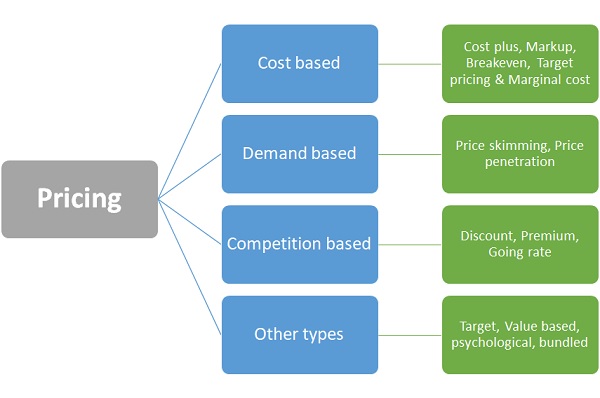October 15, 2024
7 Different pricing strategies: Definitions, Types, Examples (2024)
Optimize your profitability with the right pricing strategies for your business. Learn about practical 7 pricing strategies. How do you choose among different pricing strategies when launching a new product? Read this guide to uncover why some products increase revenue with increased prices, and others don’t.
Do you have high sales volume but declining profitability? Well, are you using the right pricing strategies for your business?
Pricing is one of the most important pillars for the success of a D2C business. As pricing makes a huge impact on the profitability of a business, big companies in every industry are extremely careful with their pricing, spending millions of dollars to find the best pricing strategy.
But pricing is also one of the most overlooked factors by small business owners. Many small businesses simply price their goods and services based on the cost of goods sold. However, this is really risky for businesses. Setting the price too high will lead to a drop in sales volume, while a price too low will eat into your profitability.
Today we will look into 7 pricing strategies for retail to achieve better prices for your products, and maximize your profits.
Pricing strategy marketing
One important aspect of a successful pricing strategy in marketing is understanding the target market and how they make purchasing decisions.
By conducting market research and analyzing consumer preferences, companies can develop pricing strategies that are tailored to meet the needs and desires of their customers.
Moreover, companies have the opportunity to engage more customers and boost their sales revenue by incorporating friendly promotional strategies like offering discounts, running sales, or providing bundle deals.
To stay competitive in the industry, it's really important for companies to regularly assess and tweak their pricing strategy in line with market trends and competitor analysis.
What is a pricing strategy in business?
Pricing strategies refer to the methods and techniques businesses use to set and adjust the prices of their products or services. Some common pricing strategies include competitive pricing, value-based pricing, and markup pricing.
It is important for businesses to choose the right pricing strategy based on their target market, competition, and overall business goals in order to optimize profitability and maintain customer satisfaction.
There are more than a dozen pricing strategies that businesses use today to maximize sales. In this blog, we will focus on practical pricing strategies in the retail industry, but many of these apply to other industries as well.
Types of pricing strategy
- Value-based pricing strategy
- Competitive pricing strategy
- Skimming pricing strategy
- Cost-plus pricing strategy
- Penetration pricing strategy
- Premium pricing strategy
- High-low pricing strategy
1. Competitive Pricing
Competitive pricing, or competition-based pricing, is the most commonly used pricing strategy as it is simple and effective. This strategy works by setting prices based on how competitors charge for the same or similar products. A competitive pricing strategy is suitable for businesses with a lot of competitors, and benchmarks can be easily found.
2. Markup pricing
Markup pricing, or cost-plus pricing, is also one of the most popular pricing strategies, especially for retail businesses. Markup pricing refers to adding a price margin on top of the cost of goods sold.
Businesses employing this strategy normally determine the prices based on the revenue or profit goal set. A cost-plus pricing strategy is often used together with competitive pricing. You can use Konigle Bulk Price Editor to update prices with respect to the costs of your products.
3. Value-based pricing
Value-based pricing strategy refers to setting a price based on how much the consumers are willing to pay. This is often used for differentiated products. By monitoring the prices of similar products, you can figure out how much people are willing to pay for products with similar features or of the same category. This also depends on a business’s understanding of its customer’s pain points.
Then, you can carefully analyze how your product is different from the monitored ones and decide how to adjust your prices.
4. Premium pricing
Premium pricing is to keep the price of products artificially high in order to give customers favorable perception and prestige.
This strategy is often used for luxury goods or premium goods. For example, luxury handbags such as Gucci, Chanel and Hermes are priced much higher than normal handbags. The high prices bring pride and prestige for their customers, and products like this actually have increased demand for higher prices.
5. Penetration pricing
Penetration pricing for the introduction phase works by setting a low price for a product in order to increase market share rapidly. This is normally used for products newly introduced into a competitive market. Businesses that use penetration pricing hope to attract consumers to convert to new brands or new products with low prices.
The prices set are always much lower than the competitors’ prices. However, this strategy can be highly risky if the prices set are lower than the costs of goods sold. It can also trigger a price war, which is unfavourable in the long run.
For example, when European supermarket Aldi entered a new market, they often price their products lower than their competitor Tesco, in order to grab the market share.
6. High-low pricing
High low pricing (for promotional period) is most commonly used by small retail businesses for products that are a fad or seasonal. This refers to setting the price highly at first when the product is popular and then reducing the price through promotion or clearance sales when the fad is over.
This strategy is often used by clothing retailers such as Uniqlo, especially for UT series. Prices are often reduced after 2 months of initial launch in order to clear stocks.You can run scheduled high-low pricing via the Konigle Deadstock Prevention Tool.
7. Price skimming
Price skimming refers to setting the highest price when introducing a new product and then reducing the price gradually. The skimming pricing strategy is mainly used for products with a short product life cycle. For example, electronic gadgets such as the iPad and Nintendo Switch have the highest price when they are first introduced, and then the price lowers as time passes.
You can automate the price skimming process for your online store using the Konigle Price Skimming Tool.
Conclusion
In conclusion, choosing the right pricing strategy is crucial for businesses looking to increase profitability while maintaining high sales volume. Small business owners should avoid simply pricing their products based on cost, as this can lead to either a drop in sales or reduced profitability. Instead, implementing effective 7 pricing strategies can help optimize profits and enhance customer satisfaction.

